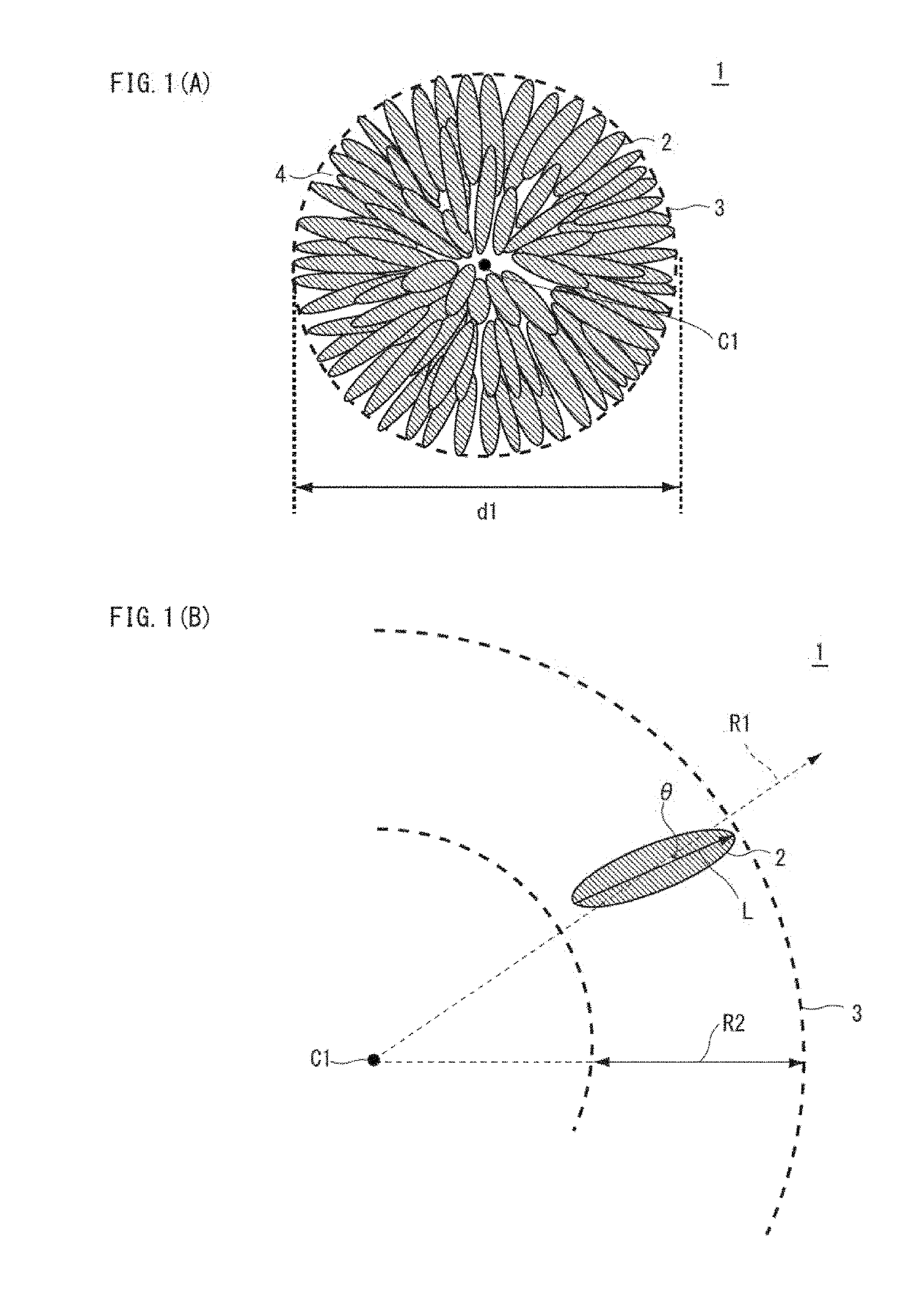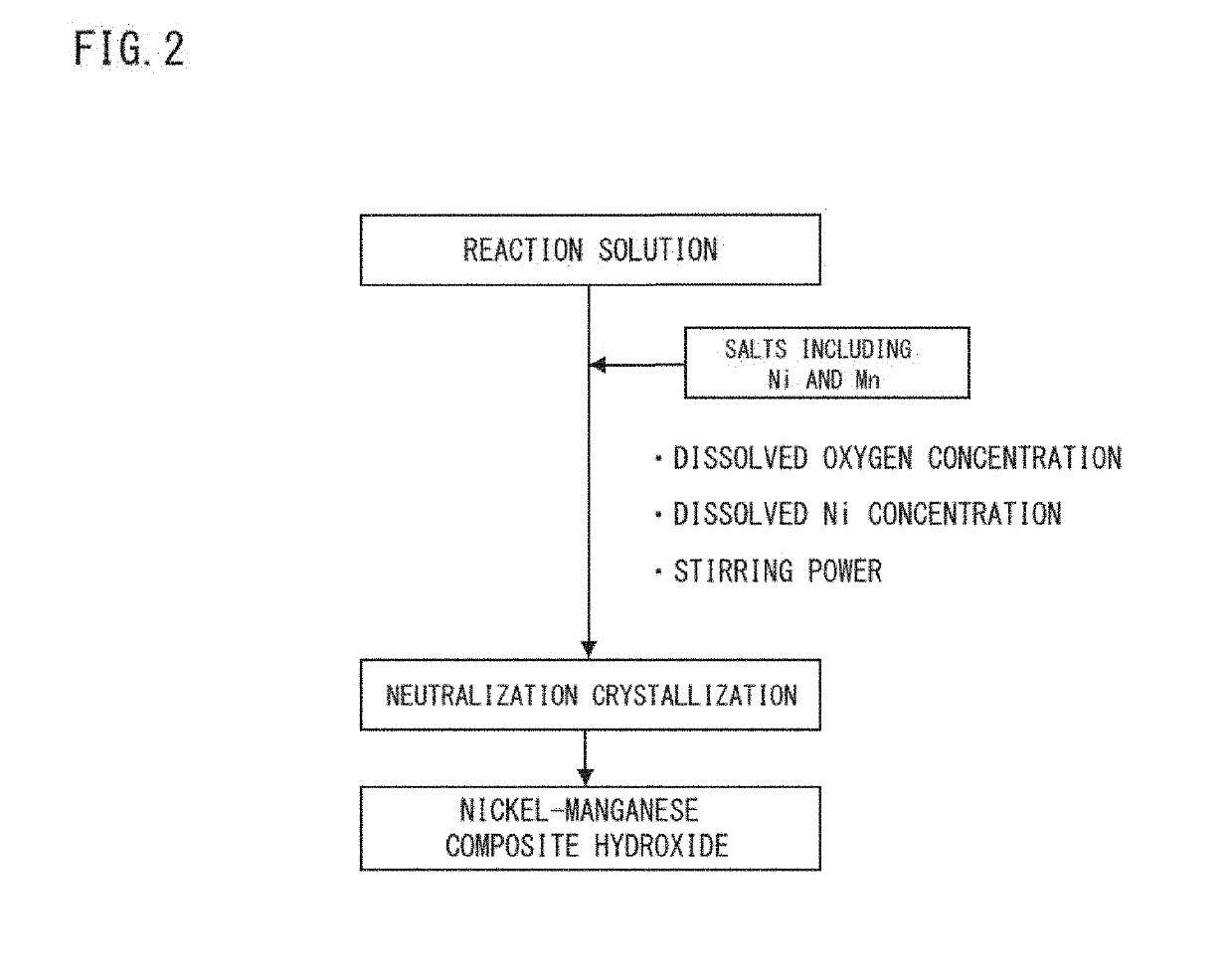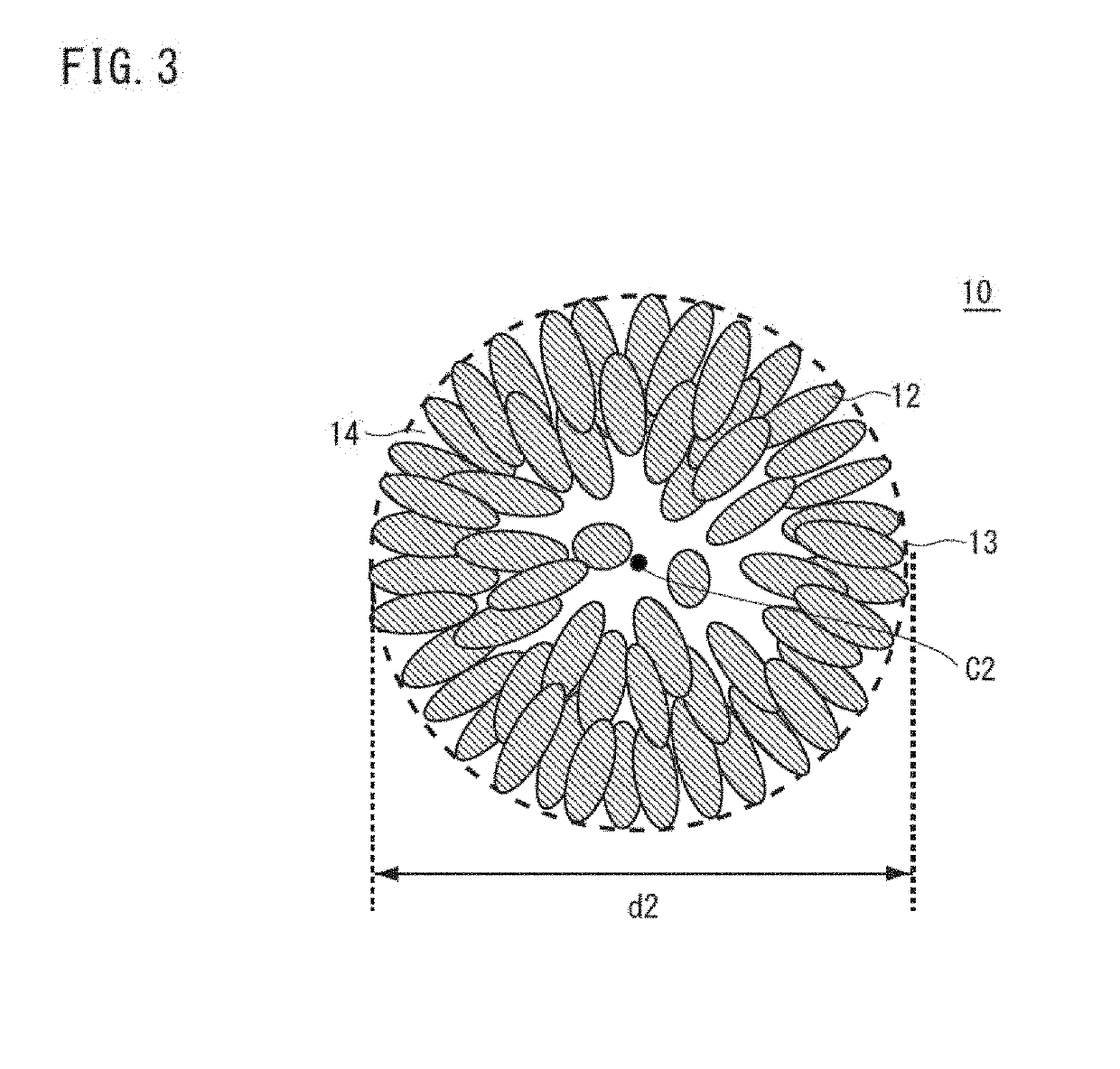Nickel manganese composite hydroxide and method for producing same, positive electrode active material for nonaqueous electrolyte secondary battery and method for producing same, and nonaqueous electrolyte secondary battery
a composite hydroxide and nonaqueous electrolyte technology, applied in the direction ofnickel compounds, cell components, electrochemical generators, etc., can solve the problems of high production cost, inconvenient mass production, and inability to say that the volume energy density of the battery is high, and achieve excellent cycle characteristics, high output characteristics, and high battery capacity
- Summary
- Abstract
- Description
- Claims
- Application Information
AI Technical Summary
Benefits of technology
Problems solved by technology
Method used
Image
Examples
example 1
[Preparation of Composite Hydroxide]
[0123]Prescribed amount of purified water was taken into a reaction vessel (50L); the stirring power was set at 6.0 kW / m2; and with stirring, the temperature inside the vessel was set at 42° C. At this time, inside the reaction vessel was made to a non-oxidative atmosphere (oxygen concentration: 1% by volume) thereby adjusting the dissolved oxygen concentration in the solution in the reaction vessel at 1.0 mg / L. Into this reaction vessel were continuously and simultaneously added a 2.0 M mixed aqueous solution including nickel sulfate, cobalt sulfate, and manganese sulfate with the molar ratio of nickel:cobalt:manganese=46:30:24, an alkali solution of a 25% by mass aqueous sodium hydroxide solution, and a complexing agent of a 25% by mass aqueous ammonia solution so as to make the aqueous reaction solution. The pH value and the ammonium ion concentration were controlled such that the dissolved nickel concentration might become constant at 400 mg / L...
example 2
[0136]The positive electrode active material was obtained and evaluated in the same way as Example 1 except that the nickel concentration in the aqueous reaction solution in the crystallization process was changed to 600 mg / L. The evaluation results of the positive electrode active material thereby obtained are listed in Table 2.
example 3
[0137]The positive electrode active material was obtained and evaluated in the same way as Example 1 except that the residence time of the mixed aqueous solution in the crystallization process was changed to 10 hours.
PUM
 Login to View More
Login to View More Abstract
Description
Claims
Application Information
 Login to View More
Login to View More - R&D
- Intellectual Property
- Life Sciences
- Materials
- Tech Scout
- Unparalleled Data Quality
- Higher Quality Content
- 60% Fewer Hallucinations
Browse by: Latest US Patents, China's latest patents, Technical Efficacy Thesaurus, Application Domain, Technology Topic, Popular Technical Reports.
© 2025 PatSnap. All rights reserved.Legal|Privacy policy|Modern Slavery Act Transparency Statement|Sitemap|About US| Contact US: help@patsnap.com



